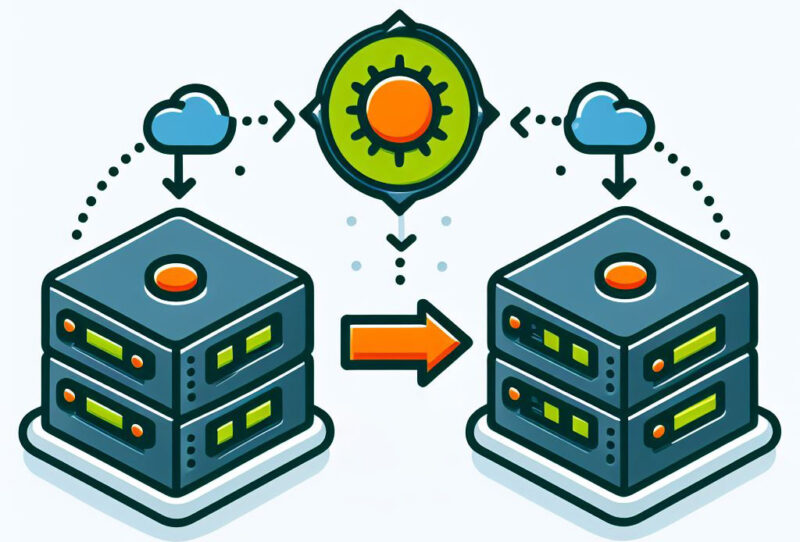In today’s fast-paced world, imagine an organization’s heartbeat being its data. This data not only powers essential services but also paves the way for informed, strategic decisions. Now, imagine the heartbeat skipping a beat due to unforeseen events or cyber threats. The very essence of serving customers and maintaining momentum could be jeopardized.
This is why disaster recovery isn’t just a technical term; it’s a lifeline. With the increasing unpredictability of natural calamities and the looming shadow of cyberattacks, ensuring the safety of this heartbeat – our data – becomes a deeply personal mission for every organization, striving for uninterrupted business continuity.
Making a Disaster Recovery Plan
Preparation is the key to a successful disaster mitigation strategy. Waiting until a hurricane is closing in on a data center location or scrambling to locate backup data in the midst of a DDoS cyberattack can leave an organization completely paralyzed by a disaster event. A good disaster recovery plan takes every conceivable risk into account, usually incorporating an integrated risk management philosophy that identifies critical dependencies that could be impacted if any aspect of operations is disrupted.
When considering redundancy options for data backups, most organizations turn to some form of off-site solution that provides some measure of geographic protection. If the primary data center is impacted by a disaster event, backed-up or replicated data will remain available elsewhere, preferably in a location untouched by that same disaster. Simply having that data available is only part of the equation, however.
Hot Site vs Cold Site Disaster Recovery
The most important question facing a business following a disaster is how long it will take them to get operations up and running again. In an ideal situation, there would be no disruption at all to services or networks, but shifting over to a backup solution isn’t always as easy as flipping a switch. Data may need to be transferred and, depending upon the backup frequency, may not be completely up to date.
Disaster recovery data center solutions are typically available in one of two forms: hot site and cold site. While both approaches involve backing up data in a redundant data center location, they have a few important differences.
What is a Hot Site?

A hot site is a real-time replication of an existing network environment. All data generated and stored at the primary site is immediately replicated and backed up at the disaster recovery site.
Hot sites typically involve managed hosting with a colocation data center. Since the network environment is a fully live mirror of the primary network, it requires ongoing management and oversight.
In many cases, hot sites provide office work areas that can be used as a temporary base of operations should a disaster force a company to recover to a hot site while their primary site is brought back into a usable state. A few companies also offer rolling hot site disaster recovery, which delivers a mobile facility (usually in the back of an 18-wheeler) to a specific location and handles networking needs until the primary site is ready to take over again.
The benefit of a hot site is that it is fully redundant and can be used immediately in the event of a disaster, significantly reducing the risks of costly system downtime. That functionality and high availability come at a price, however, as hot site deployments are much more expensive than other backup solutions.
What is a Cold Site?

Cold sites provide the same work area recovery space and infrastructure support as hot sites, but they don’t function as a complete replica of the primary environment. Customers must provide their own equipment and manage it themselves in a cold site, so while data may be backed up and stored there, some ramp-up time will be necessary to bring network services online at the location following a disaster.
If an organization has sufficient warning, it can get the cold site up and running before a known disaster event takes place to ensure business continuity. A cold site that already has the necessary equipment in place to take over all of those services but requires some preparation time to be brought online is often referred to as a “warm site.”
In most cases, however, the cold site serves primarily as a backup location for facilitating recovery of the main site rather than a completely redundant environment that can take over all network services. While a cold site offers less protection against downtime, it’s also much less expensive than a hot site deployment because it requires less equipment and doesn’t involve managed services.
Making the Right Choice for Business Continuity
The major question an organization must answer when deciding on a backup solution is how much downtime it can tolerate. For many industries, such as healthcare or financial services, even a few seconds of downtime can cause substantial revenue losses and create massive compliance liabilities.
Companies with these high availability needs will generally turn to hot site solutions despite the added expense. If an organization can tolerate some level of downtime to its network and services, a cold site solution is often preferable because they’re unlikely to realize the benefits of the managed hosting services provided by a hot site.
Colocation data centers are ideal partners for disaster recovery solutions due to their redundant infrastructure and extensive interconnection services. Disaster mitigation is even easier to implement if the customer’s primary IT infrastructure is already installed within a colocation facility. This allows them to easily set up a redundant site in another location, ensuring that any disaster event that disrupts their primary system will not result in long-term downtime.
FAQs
What is the difference between disaster recovery and business continuity?
While disaster recovery focuses on the restoration of IT systems and data after a crisis, business continuity encompasses a broader strategy to ensure that the entire business operations can continue during and after a disaster.
How often should a disaster recovery plan be updated?
It’s recommended to review and update your disaster recovery plan at least annually or whenever there are significant changes to your business operations, technology, or environment.
Are there any industry-specific regulations for disaster recovery?
Yes, industries like healthcare and finance often have strict regulations regarding data protection and recovery. It’s essential to be aware of and comply with these regulations in your sector.
How do I test the effectiveness of my disaster recovery plan?
Regularly scheduled drills, simulations, and tests can help ensure that your disaster recovery plan works as intended and that your team knows their roles during a crisis.
What is the role of cloud computing in disaster recovery?
Cloud computing offers scalable and flexible solutions for data backup and recovery. Many organizations are leveraging cloud-based disaster recovery solutions for cost-effectiveness and ease of deployment.
Final Words
In an era where data is the lifeblood of businesses, ensuring its safety and accessibility during crises is paramount. Whether you opt for a hot site, a cold site, or another solution, the key is to be prepared.
By understanding your organization’s unique needs and risks, you can craft a disaster recovery strategy that not only safeguards your data but also ensures the continuity of your business operations. Remember, in the face of adversity, preparation is your strongest ally.
Related Posts:
- Centralized vs Decentralized Network: Which One Do You Need?
- Enterprise vs Edge Data Center: Which Is Right for You
- Which Industries Are Most At Risk For Cyber Attacks?
- Baby Carrier vs. Stroller ─ Which Is Better for Your…
- 10 Data Center Migration Best Practices: Ensuring a…
- 6 Best Practices for Data Center Disaster Recovery








